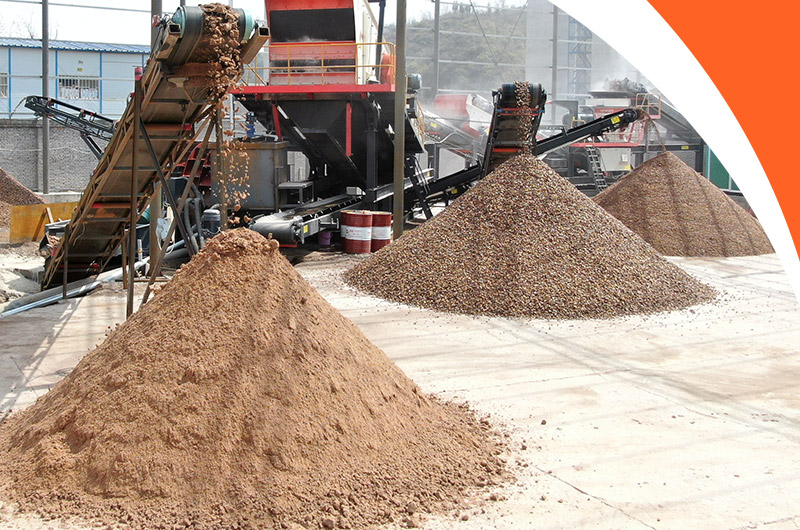How to Crush Stones: A Comprehensive Guide

Identifying stone types and hardness
Here are the most commonly used types of rocks for producing crushed stone and their Mohs hardness:
Common Rocks
Mohs Hardness
Characteristics
Granite
6每7
Durable, used for construction, needs strong crushing force
Quartzite
7
Very hard, used in high-wear environments
Basalt
6
High hardness, used in construction and paving
Sandstone
2每7
Hardness depends on the proportion of its mineral components, used in construction and decoration
Limestone
3每4
Relatively soft, easy to crush, used in construction and cement manufacturing
Marble
3每4
Easy to work with, used for decoration and sculpture
Gypsum
2
Very soft, used in drywall and cement additives
Talc
1
Softest mineral, used for talcum powder, easily crushed by hand
Which equipment can be used for crushing rocks?
The key to obtaining high-quality crushed stone is choosing a stone crusher that matches the material characteristics.
1. Gyratory Crusher Crusher
-
Parameters: Maximum feed size 1,350 mm, production capacity 2,354每14,082 t/h
- Features: Crusher are suitable for the primary crushing of medium to high hardness and abrasive rocks like granite and basalt. Not suitable for sticky materials. Typically used in medium to large stone processing projects for high output.
- Output: Coarse aggregates
2. Jaw Crusher Crusher
-
Parameters: Maximum feed size 1,200 mm, production capacity 105每1,590 t/h
- Features: Crusher are typically the primary choice for hard rock crushing, capable of handling high humidity and high viscosity rocks. They are the best choice for medium to small-scale stone production lines.
- Output: Coarse aggregates
3. Cone Crusher Crusher
-
Parameters: Maximum feed size 450 mm, production capacity 85每2,181 t/h
- Features: Crusher are suitable for secondary or even tertiary crushing of medium-hard rocks. They cannot crush wet or sticky stones. Cone crushers produce well-shaped crushed stone and are ideal for large quarry operations.
- Output: Medium to fine aggregates
4. Impact Crusher Crusher
-
Parameters: Maximum feed size 800 mm, production capacity 60每2,000 t/h
- Features: Crusher are suitable for secondary and tertiary crushing of medium-hard, brittle, and low-abrasive stones like limestone and shale. They occupy a small footprint and are easy to maintain.
- Output: Medium to fine aggregates, producing cubic-shaped stones with minimal fines.
5. Hammer Crusher Crusher
-
Parameters: Maximum feed size 300 mm, production capacity 3每95 t/h
- Features: Crusher are suitable for medium to fine crushing of medium-hard and brittle materials achieving a high reduction ratio of up to 50 with finer output (≒40 mm). They are ideal for small-scale production. Heavy hammer crushers are ideal for secondary crushing and shaping in large-scale, high-output production lines.
- Output: Hammer crushers produce medium to fine aggregates, while heavy hammer crushers produce coarse aggregates.
6. Roll Crusher Crusher
-
Parameters: Maximum feed size 30 mm, production capacity 3每110 t/h
- Features: Crusher are suitable for medium to fine crushing and sand making of hard and brittle rocks. They can crush materials like coal, clay, or stones with high moisture content.
- Output: Fine aggregates with uniform particle size distribution and low oversize material.
7. Sand Making Machine / Vertical Shaft Impact Crusher Crusher
-
Parameters: Feed size <45 mm for hard materials, <50 mm for soft materials, production capacity 80每650 t/h
- Features: Crusher are tertiary crushers that crush rocks into gravel, characterized by fine crushing and coarse grinding, producing high-quality sand products.
- Output: Fine sand
Crucial equipment after crushing: rock screeners Crusher
-
Circular vibrating screen: Utilizes circular motion to move materials across the screen, suitable for sticky or wet materials, commonly used in stone crushing, sand production, and ore processing.
- Linear vibrating screen: Moves materials in a straight line, offering higher screening efficiency, ideal for fine screening and classification of diverse materials.
What is crushed stone used for?
-
Road construction: Used as a base layer for roads and highways, providing a stable foundation to distribute weight and support road surfaces.
- Foundations for concrete and pavers: Essential aggregate in producing concrete and asphalt. Additionally, used as a base for concrete and pavement bricks to enhance stability and facilitate drainage.
- Drainage control: Commonly employed in drainage systems such as French drains, facilitating effective water flow away from buildings and flood-prone areas.
- Soil improvement: In agriculture, crushed stone enhances soil drainage and aeration, promoting healthier plant growth.
- Landscaping: Various colors and sizes of crushed stone are used to create pathways, walkways, or decorative ground cover in gardens and parks, offering aesthetic appeal and visual interest.
Statement: If the content on this site infringes upon the legitimate rights and interests of the original author, please contact this site to delete it.

